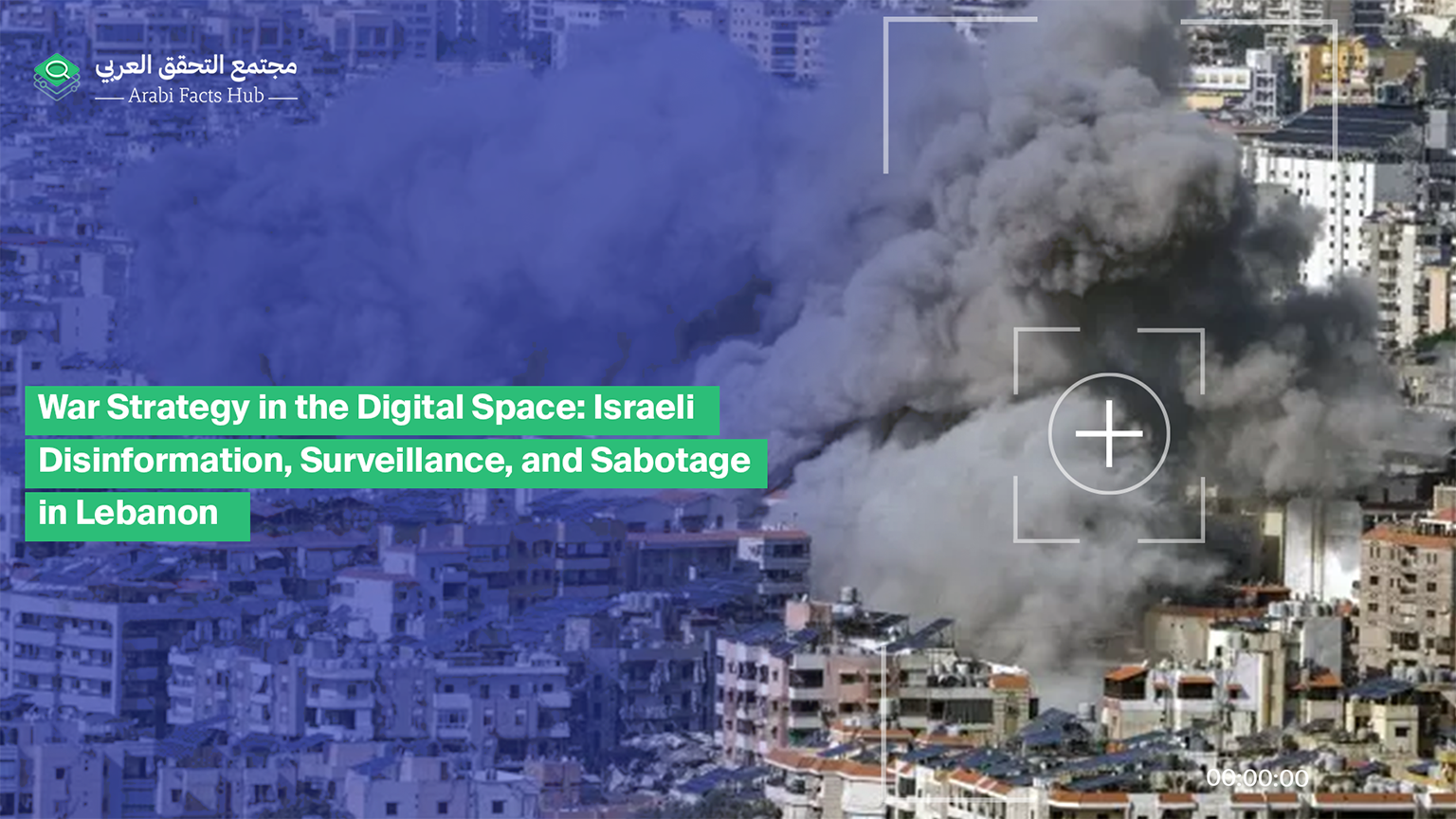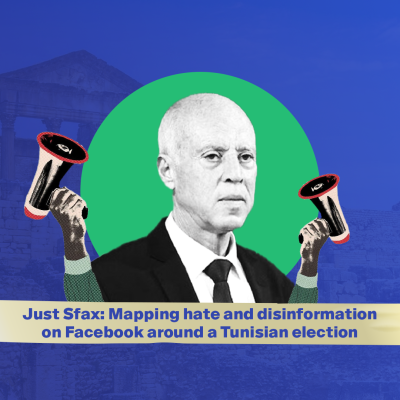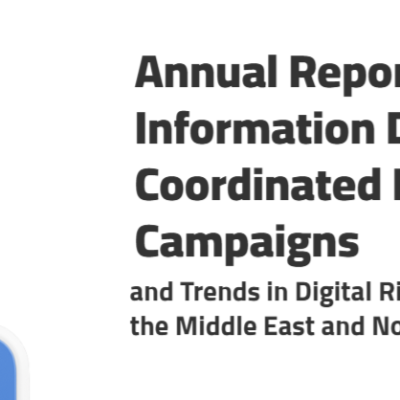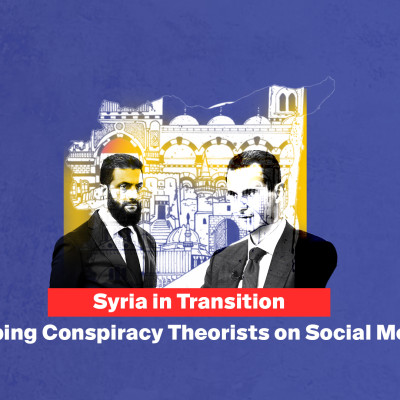Tom Wakin
works in the technology sector and studies the Middle East at the American University of Beirut. He is a Lebanese-American from New York City interested in the social role of technology.
War Strategy in the Digital Space: Israeli Disinformation, Surveillance, and Sabotage in Lebanon

On September 23, 2024, Israel began a heightened bombing campaign across Lebanon after almost a year of fighting following the start of Israel’s war on Gaza on October 7, 2023. While a ceasefire deal was signed on November 26th, 2024 between Israel and Hezbollah, the two months that preceded were marked by both human and digital rights abuses, which similarly characterize its war on Gaza.
Israel has a long history of weaving its genocidal, material, and physical war objectives into the digital space. It is integral to Israeli strategy, carried out on the Palestinian people throughout Occupied Palestine, and now notably in Lebanon. Israel uses these tactics of digital rights abuses to further their campaigns of mass terror, displacement, and killing against civilians in Lebanon.
Digital rights generally refer to the application of human rights to the digital sphere; according to the Office of the United Nations High Commissioner for Human Rights (OHCHR), “universal and open” access to the Internet is a human right, and human rights must be protected in digital spaces. In our contemporary time, the digital space is tied to the physical world we live in, and digital abuses have dire and dangerous consequences.
Israeli digital attacks against civilians in Lebanon take several forms and are fully integrated in their war strategies and human rights violations. Some of the main tactics of this digital warfare include mass data collection, unlawful surveillance, misinformation campaigns and the targeting of telecommunications structures. Using these attacks, Israel sows fear and distrust in the Lebanese population, in violation of their personal and digital rights – further underscoring the scale of human rights violations that it is committing in Lebanon.
The IDF's use of flyers
Since September 17, 2024, Israel has stepped up its aggression towards the Lebanese people. In a shocking attack, Israel simultaneously detonated thousands of pagers, followed the next day by walkie-talkies, killing 39 people and wounding more than 3,400, including children. Israel then unleashed a violent bombing campaign starting on the 23rd, causing death, extensive damage, injuries, and mass displacement. As of December 27th, 4,047 Lebanese people have been killed by Israeli aggression and 16,638 have been wounded.
Often, when preparing to bomb Lebanon, the Israeli military announces the strike on X (formerly Twitter). However on September 23, while bombing the Beqaa Valley, Israeli soldiers dropped flyers across the region containing QR codes, instead of their usual evacuation instructions. Hezbollah quickly issued a statement not to scan the code on the flier at risk of giving the Israeli access to the device, which could potentially open up its user to the risk of surveillance. Thus, the residents of the Beqaa valley have the dilemma of choosing between immediate safety and digital violations, which could also put them in danger. This new kind of flyer marked a distinct change from previous tactics, such as those used in Gaza, due to its the potential for surveillance and information gathering through a scannable QR code.
Israel has dropped leaflets and flyers across areas of Gaza before bombings and invasions, with the flyers often including written evacuation orders telling people to leave their homes immediately. Israel subdivided the Gaza Strip into small zones and would drop flyers with written instructions and maps; the maps have highlighted areas to evacuate from and into, demarcated by their zoning system. The flyers sometimes also have warnings about not approaching certain areas, also marked out according to the zone system.
In another instance of a flyer drop, the Israeli army dropped leaflets with pictures of Israeli captives and a call for information. The Israeli army used these as an opportunity to include information that those who collaborate can return home if they help identify the location of a captive. In none of these instances in Gaza, however, did the flyers include a QR code, underscoring the relative novelty of the tactic.
Israeli misinformation through social media, phone calls, and messages
Also using X (formerly Twitter), Avichay Adraee, the Arabic language spokesman for the Israeli military, will often post the location that is set to be bombed with a picture and radius around the targeted building. The posts will go up only a short time before the strike, usually 30 minutes and sometimes less. For example, on November 26th, Israel bombed central Beirut and only 10 minutes after the evacuation warning went up. If the attack happens at night and while people are sleeping in their homes, this timing leaves little opportunity for those in the area to react, especially if they are not users of X.
Amnesty International shows that Israeli authorities present misleading information about evacuations and incoming strikes, specifically how they define the dangerous area around imminent attacks. Some warnings say people should evacuate 500 meters past the strike target. However, when the Israeli military’s Arabic spokesperson releases images of the strike target with a radius drawn around the location, the drawn radius is much smaller than the 500 meter radius initially described. This leads to an ambiguous zone where people may or may not suffer damage from the strike, and confusion about where they can evacuate to in such a short time.
On top of the location-based misinformation, Israeli officials have actively distributed misinformation directly to Lebanese residents’ devices. Corresponding with the beginning of the heightened bombing campaign, Lebanese residents began to receive calls and messages through WhatsApp and over cell lines telling them to evacuate or face impending bombs. Even the Lebanese Minister of Information, Ziad Makari, received a call. In an interview with L’Orient Today, cyber security consultant Roland Abi Najem estimated that three out of four of the messages are fake. As of October 25th, according to SMEX, a digital rights NGO based in the Middle East, the Lebanese intelligence services have identified and confirmed over 280 fake evacuation calls. The threatened strike never comes, and the misinformation causes fear and confusion about where to go next. Thus, Israelis weaponize misinformation to further displace people.
More concerningly, some of the calls and messages contain specific information about the phone’s owner, implying that Lebanese personal data has been leaked or stolen, whether by hacking or mismanagement. Those purporting to be Israeli military mention personal details to the Lebanese citizen who picks up the phone. Even taking the calls at face value and not recognizing them as the misinformation that they are, Amnesty International has called the warnings “misleading and inaccurate.”
Misinformation, including the fake calls or misleading messages on social media, are just part of the campaign of digital rights abuses. It is clear that on many levels, the Lebanese have had their privacy violated and their homes threatened, and some destroyed. They are compelled to leave their land because of threats to their physical homes coming into their digital space causing confusion, mass displacement, and fear.
Targeting infrastructure
Israeli aggression towards Lebanese digital rights is not limited to attempts at surveillance or misinformation – it also extends towards destroying the infrastructure needed to maintain Internet and cell service. The Israeli military intentionally bombs both the telecommunication infrastructure of Lebanon and the workers themselves who repair the infrastructure, mirroring the same tactics in Gaza. According to Johnny Corm, the Caretaker Minister of Telecommunications, Israel has severely damaged the communications infrastructure of Lebanon with costs reaching $67 million as of the end of October. The specific attacks target both the internet provider Ogero and the cell service providers Alfa and Touch; hundreds of stations for both Alfa and Touch have been destroyed and over 15,000 Ogero subscribers have completely lost internet access since the start of the war. In two airstrikes, one on September 29 and the other on October 7, Israel destroyed the Takch Group internet station in Sur. For several days after the incident, there was no landline internet service and cell service was out for multiple days. Residents fled the bombs, but they also fled for internet access. On October 2, Ogero posted on their X account that they could not reach a station in Bint Jbeil in order to repair it because of security threats.
There is a compounded effect of the continuous airstrikes: not only is the infrastructure destroyed, but it is also being prevented from being repaired under continuous bombing. And even when bombing slows down, such as after the ceasefire, the damage sustained to the communication infrastructure in Southern Lebanon could take several months to repair. The Mreijeh Ogero station in Dahiyeh, for example, was completely destroyed. These attacks sever Lebanese from the internet, and thereby isolate them from their loved ones, emergency services, and basic information. Furthermore, downed internet service also undermines press and relief efforts in the area. By targeting physical structures used to communicate and connect Lebanese with each other and the rest of the world, Israel attacks Lebanon’s digital space, which is an extension of the state and society itself.
Conclusion
By interweaving their bombings with a concerted campaign of misinformation, threats, and surveillance tactics, the Israeli army has exacerbated the human rights abuses it is committing in Lebanon.
While much can be said about the impunity that Israel has enjoyed so far from the repeated accusations of war crimes and crimes against humanity, it is clear that the violations being committed in Lebanon are in breach of several human rights protections and charters, including Articles 3, 12, and 13 of the UN Declaration of Human Rights for wantonly killing civilians, and compelling Lebanese residents to flee their homes and their land. The misinformation, hacking, and infrastructure attacks violate the Lebanese right to access, privacy, and security on the internet as laid out in Rights 1 and 3 of The Charter of Human Rights and Principles for the Internet written by the OHCHR.
And while the Lebanese state could do more to protect its citizens and their data, Israeli aggression regularly shatters any possibility of normal life in Lebanon. To understand the depths of the violence and destruction inflicted by Israel, attacks on digital rights must be included as part of the whole picture. The two worlds, digital and physical, are connected; a violation of digital rights affects, and is reflected in, the physical world. In order to protect both human rights and digital rights, the two must be considered in tandem. It is essential to approach the grave Israeli violations of Lebanese digital rights in the same regard as other human rights abuses, as digital warfare becomes increasingly used in order to misinform, attack, and terrorize populations.





